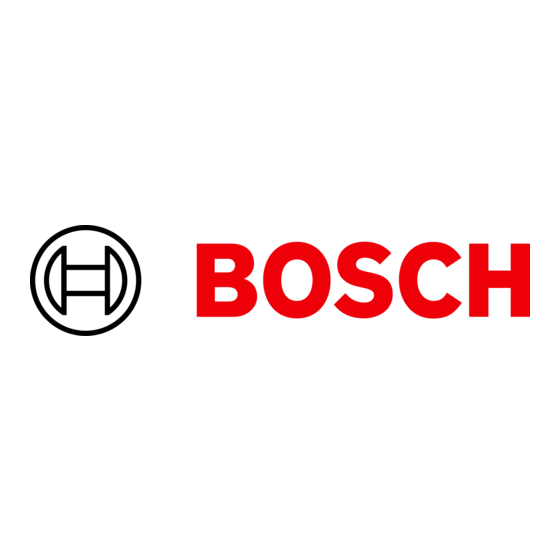Bosch CMG7361 1B Series 사용자 설명서 및 설치 지침 - 페이지 25
{카테고리_이름} Bosch CMG7361 1B Series에 대한 사용자 설명서 및 설치 지침을 온라인으로 검색하거나 PDF를 다운로드하세요. Bosch CMG7361 1B Series 48 페이지.
Bosch CMG7361 1B Series에 대해서도 마찬가지입니다: 사용자 설명서 및 설치 지침 (48 페이지)

Cooking compartment
Area
Suitable cleaning agents Information
Enamel surfaces
¡ Hot soapy water
¡ Vinegar water
¡ Oven cleaners
Self-cleaning sur-
-
faces
Shelf supports
¡ Hot soapy water
Accessories
¡ Hot soapy water
¡ Oven cleaners
18.2 Cleaning the appliance
In order to avoid damaging the appliance, you must
clean your appliance only as specified, and with suit-
able cleaning products.
WARNING ‒ Risk of burns!
The appliance and its parts that can be touched be-
come hot during use.
Caution should be exercised here in order to avoid
▶
touching heating elements.
Young children under 8 years of age must be kept
▶
away from the appliance.
WARNING ‒ Risk of fire!
Loose food remnants, fat and meat juices may catch
fire.
Before using the appliance, remove the worst of the
▶
food residues and remnants from the cooking com-
partment, heating elements and accessories.
Requirement: Read the information on cleaning
products.
→ "Cleaning products", Page 24
1.
Clean the appliance using hot soapy water and a
dish cloth.
For some surfaces, you can use alternative
‒
cleaning agents.
→ "Suitable cleaning agents", Page 24
Dry with a soft cloth.
2.
Regenerating self-cleaning surfaces in the
cooking compartment
The back panel in the cooking compartment is self-
cleaning. The self-cleaning surfaces are coated with a
porous, matt ceramic layer and have a rough surface.
When the appliance is in operation, the self-cleaning
surfaces absorb splashes from baking, roasting or
grilling, and break them down. If the self-cleaning sur-
Soak any heavily soiled areas and use a brush or steel wool.
Leave the appliance door open to dry the cooking compartment
after cleaning it.
Notes
¡ Enamel burns at very high temperatures, causing minor discol-
ouration. The functionality of your appliance is not affected by
this.
¡ The edges of thin trays cannot be completely enamelled and may
be rough. This does not impair the corrosion protection.
¡ Food residues leave a white coating on the enamel surfaces. The
coating does not pose a health risk. The functionality of your ap-
pliance is not affected by this. You can remove residues with
lemon juice.
Follow the instructions for self-cleaning surfaces.
→ "Regenerating self-cleaning surfaces in the cooking compart-
ment", Page 25
Soak any heavily soiled areas and use a brush or steel wool.
Note: To clean thoroughly, detach the shelf supports.
→ "Rails", Page 28
Soak any heavily soiled areas and use a brush or steel wool.
Enamelled accessories are dishwasher-safe.
faces no longer clean themselves adequately during
operation, heat up the cooking compartment specific-
ally to the right temperature.
ATTENTION!
If you do not clean the self-cleaning surfaces regularly,
they may become damaged.
If dark stains are visible on the self-cleaning sur-
▶
faces, heat up the cooking compartment.
Do not use oven cleaner or abrasive cleaning aids.
▶
If oven cleaner accidentally comes into contact with
the self-cleaning surfaces, dab it off immediately us-
ing water and a sponge cloth. Do not rub.
Remove accessories and cookware from the cook-
1.
ing compartment.
Detach the shelf supports and remove them from
2.
the cooking compartment.
→ "Rails", Page 28
Remove coarse dirt using soapy water and a soft
3.
cloth:
– From the smooth enamel surfaces
– From the inside of the appliance door
– From the glass cover on the oven lamp
This prevents stains that cannot be removed.
Remove any objects from the cooking compartment.
4.
The cooking compartment must be empty.
Set the 4D hot air type of heating.
5.
Set the maximum temperature.
6.
Start the operation.
7.
Switch off the appliance after 1 hour.
8.
Once the appliance has cooled down, wipe the
9.
cooking compartment with a damp cloth.
Note: Marks may appear on the self-cleaning sur-
faces. Residues of sugar and egg white in the food
are not removed and stick to the surfaces. Red
stains are residues from salty food – they are not
rust. The stains are not hazardous to health. These
marks do not impair the cleaning ability of the self-
cleaning surfaces.
Cleaning and servicing en
25
